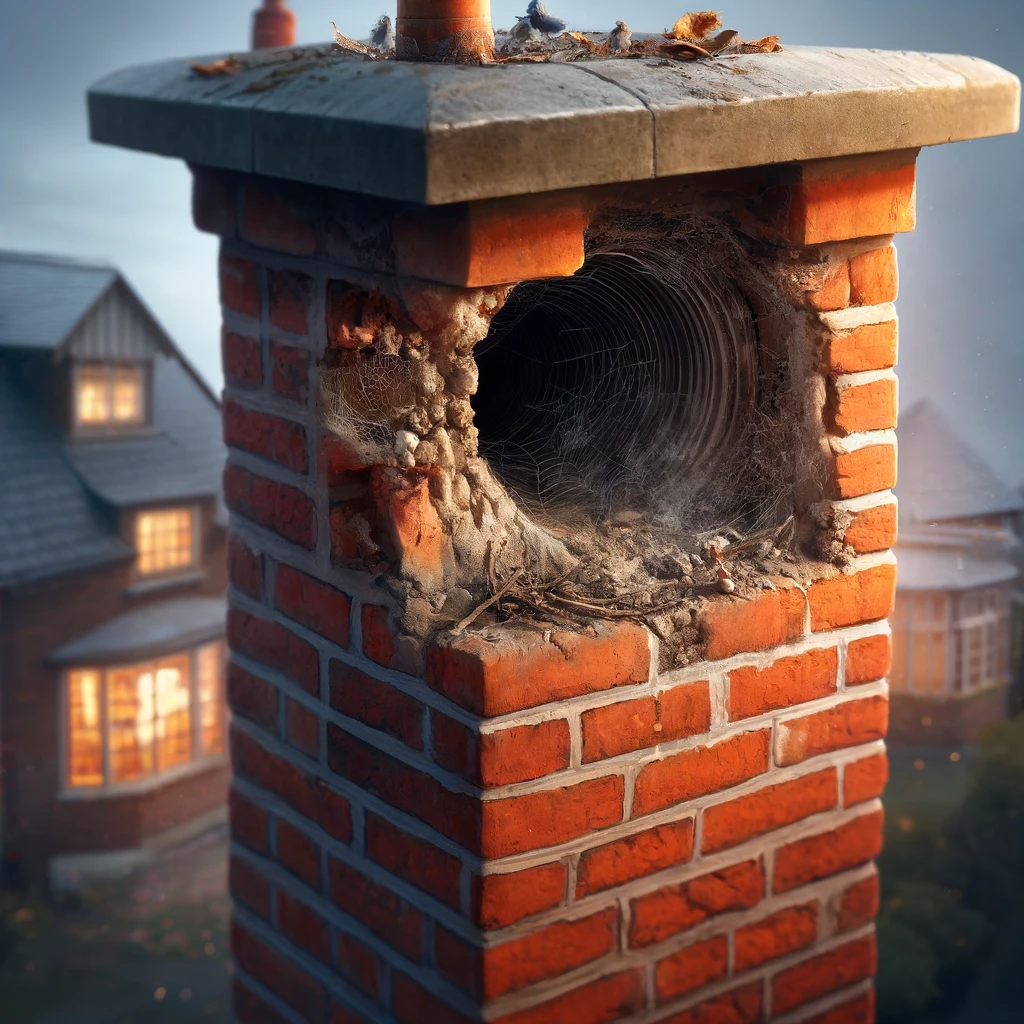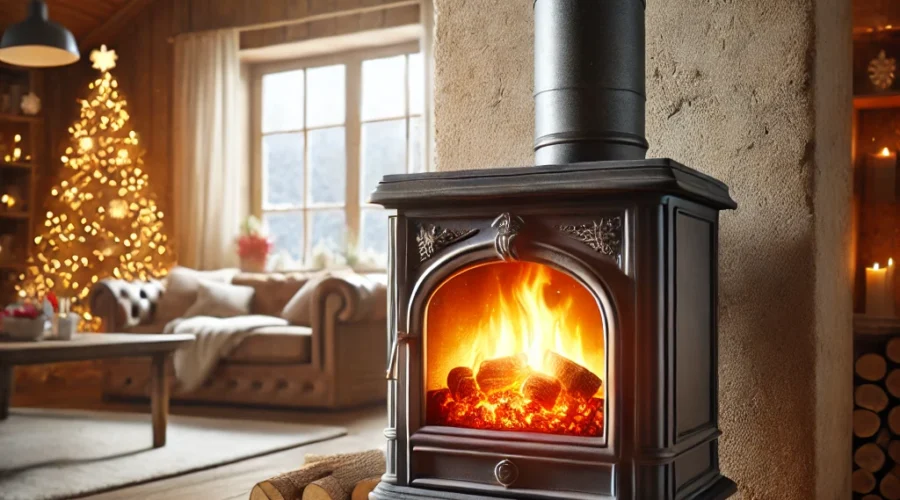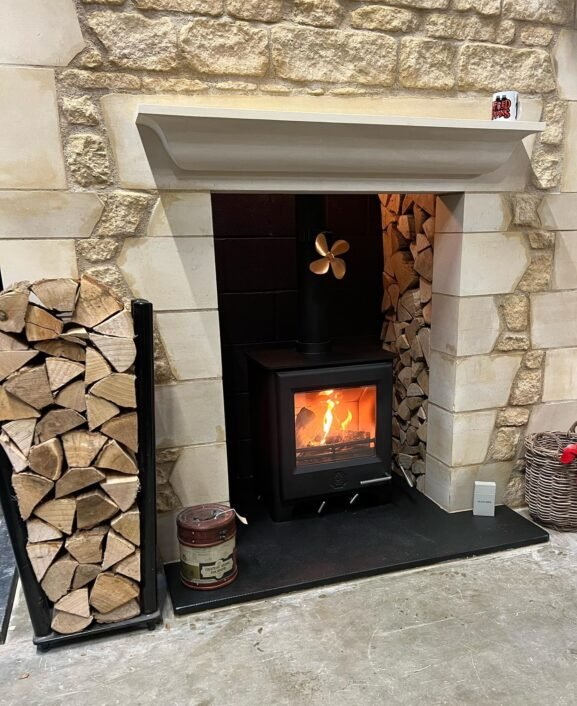Improve Heat: Combat Decreased Fireplace Efficiency from Poorly Maintained Chimneys
As the temperatures drop, we often turn to our fireplaces for warmth and comfort. But what if our cozy haven isn’t as efficient as it should be? Many of us might not realize that poorly maintained chimneys can significantly decrease fireplace efficiency. It’s more than just an aesthetic issue; it affects how well our fireplaces heat our homes.
When chimneys aren’t properly cared for, they can become clogged with soot and debris, reducing airflow and causing smoke to linger. This not only diminishes the heat output but also poses potential health risks. Regular maintenance is key to ensuring our fireplaces function at their best, keeping us warm and safe during the chilly months.
The Ultimate Guide to Fireplace Efficiency
Proper fireplace efficiency starts with diligent chimney upkeep. Ignoring maintenance issues like soot buildup leads to combustion problems and energy loss. Heating performance decreases when chimneys aren’t cleaned regularly, reducing warmth and hiking up energy bills—ouch!
To keep chimneys clean and safe, it’s important not to underestimate cleaning routines. This removes soot and debris, ensuring proper airflow. For peace of mind, make chimneys a priority and handle potential safety hazards.
Winters are chilly, so efficient fireplace operation matters. Local weather can worsen maintenance issues. Our advice: take no shame in calling a pro. Trust us, your wallet and your toes will thank you!
Want more information? The U.S. Fire Administration offers great tips. The Chimney Safety Institute of America is another excellent resource for learning more about inspections.

The Impact of Chimney Maintenance on Fireplace Efficiency
Chimney upkeep plays a big role in fireplace efficiency. Neglected chimneys can lead to significant heat loss and other issues.
Common Problems in Poorly Maintained Chimneys
- Soot Buildup: Accumulated soot, creosote, and debris block airflow. This not only affects heating performance but also poses safety hazards.
- Obstruction: From bird nests to leaves, various obstacles can clog chimneys. Poor airflow leads to combustion problems.
- Structure Damage: Cracks or missing bricks let cold air in and warm air out, causing energy loss.
Don’t let these maintenance issues ruin cozy moments. For a fire that gets everyone warm, just reach out to professionals for consultation.!
How Chimney Condition Affects Heat Output
Good chimney condition equals maximum heat output. Ignoring maintenance leads to:
- Reduced Efficiency: Blockages slow down airflow, decreasing fireplace operation quality.
- Higher Energy Costs: Inefficient fireplaces need more fuel, increasing heating expenses.
- Heat Escape: Damaged chimney liners let heat escape before it warms your home.
Don’t let winter woes keep you shivering! CSIA and USFA recommend regular cleanings. Chimney inspection by professionals is always the safest choice! We’re here to help the area heat up properly.
Signs of a Poorly Maintained Chimney
A keen eye can catch signs of a chimney begging for some TLC. Let’s look at what to watch for to keep fireplace efficiency high.
Visual Indicators
- Cracks and Deterioration: Check the chimney exterior for cracks or missing bricks. These aren’t just an age thing. They signal maintenance issues affecting chimney upkeep.
- Soot Buildup and Debris: A layer of soot buildup or bird nests can clog chimneys. Think of a chimney as a giant straw. You wouldn’t want anything blocking it.
- Damaged Flue Liner: Peeking inside the flue liner may reveal cracks. This affects heating performance, allowing heat to escape.
Spot any of these? Reach out to professionals for consultation before your fireplace operation hits a snag.
- Smoke Backdraft: Smoke entering the room instead of exiting may stink up both your living room and energy loss goals.
- Poor Heating: Is the room feeling cooler? The fireplace might blame a poorly maintained chimney for combustion problems.
- Odor of Creosote: A pungent, burning smell isn’t your candle, but accumulated creosote risk increasing safety hazards.

We recommend cleaning routines and professional check-ups to dodge these woes. Visit the Chimney Safety Institute of America or the U.S. Fire Administration to learn more. For chimney maintenance tailored for those chilly winters.
Steps to Improve Chimney Maintenance
Enhancing fireplace efficiency begins with proper chimney upkeep. Let’s explore some crucial steps to keep things cozy and safe during the chilly winters.
Regular Cleaning and Inspection
Routine cleaning is essential to prevent soot buildup and other maintenance issues. Certified professionals recommend inspecting chimneys annually, aiming for spotless flue liners and no pesky obstructions. If done right, regular inspections can catch early signs of trouble before they escalate into major safety hazards. Expect better heating performance and fewer combustion problems when this step doesn’t get overlooked. Let’s ensure our chimneys stay in top shape; reach out to professionals for consultation or learn more about chimney safety tips from the Chimney Safety Institute of America.
Repairing Structural Issues
Over time, harsh weather and constant heating can cause external and internal damage to chimneys. Addressing structural problems, such as cracks or deteriorating bricks, stops energy loss and boosts fireplace operation. Sometimes, repairing sounds like a tedious chore, but think of it as giving your chimney a spa day. It’s crucial, though, to avoid DIY repairs—leave it to the experts. For more information on chimney maintenance, check U.S. Fire Administration’s guide.
Benefits of Proper Chimney Maintenance
Regular chimney maintenance guarantees optimal fireplace performance. It prevents issues like soot buildup and energy loss, ensuring you enjoy every toasty moment by the fire.
Enhanced Fireplace Performance
Proper chimney upkeep does wonders for fireplace efficiency. When chimney systems are free from obstructions, it enhances heating performance by allowing heat to circulate thoroughly. This means no more sweater parties indoors. You save on energy costs as well, avoiding combustion problems due to blocked airflow. Proper cleaning routines can’t be overstressed. According to the Chimney Safety Institute of America, clean chimneys contribute significantly to efficient fireplace operation. For those chilly evenings, this makes a warm fire all the more inviting.
Improved Safety and Longevity
A well-maintained chimney also boosts safety and longevity. By preventing maintenance issues from turning into safety hazards, you protect your home from risks like creosote accumulation and structural damage. Think of it as giving your chimney a yearly physical to catch any potential problems. The U.S. Fire Administration confirms that regular checks decrease the chance of fire-related accidents. In areas, where snow and ice can be rough on chimneys, professional advice is essential. Let’s keep our chimneys standing tall and proud. For peace of mind and to reduce surprise maintenance bills, schedule a consultation today. Reach out to professionals for consultation.
Conclusion
By prioritizing regular chimney maintenance, we ensure our fireplaces operate efficiently and safely, especially during cold winters. A well-maintained chimney not only enhances heat output but also minimizes energy costs and health risks. Engaging professionals for inspections and cleanings is a wise investment that guards against potential hazards like creosote buildup and structural damage. Let’s commit to keeping our chimneys in top condition, ensuring warmth and peace of mind throughout the season. For expert guidance, don’t hesitate to reach out to trusted resources like the Chimney Safety Institute of America.
Frequently Asked Questions
How often should I have my chimney inspected?
Annual inspections are recommended to ensure your chimney is in good condition. Regular inspections help identify and address any buildup or structural issues early, enhancing efficiency and safety.
Why is chimney maintenance important for energy efficiency?
Proper maintenance prevents soot and debris buildup, ensuring maximum airflow and heat output. This enhances heating efficiency and reduces energy costs, particularly during cold months.
What are the common signs of a poorly maintained chimney?
Signs include soot buildup, structural cracks, damaged flue liners, smoke backdraft, and unpleasant odors. These indicate maintenance needs and potential safety hazards.
Can I clean and inspect my chimney myself?
While regular light cleaning can be done, professional inspections are advised annually. Experts can identify and fix issues you might miss, ensuring safety and optimal performance.
What are the risks of neglecting chimney maintenance?
Neglect can lead to soot buildup, decreased heating performance, structural damage, and fire hazards. It can also increase energy bills and pose significant safety risks.
How does proper chimney maintenance enhance safety?
Regular cleaning and inspections prevent hazards like creosote buildup and structural damage, reducing the risk of fire-related accidents and ensuring safer operation.
Are there specific chimney maintenance recommendations?
Given the harsh winters, it’s crucial for homeowners to ensure more frequent checks and maintenance to handle increased use and weather-related wear.
Where can I find more information on chimney safety?
The U.S. Fire Administration and the Chimney Safety Institute of America offer excellent resources.


